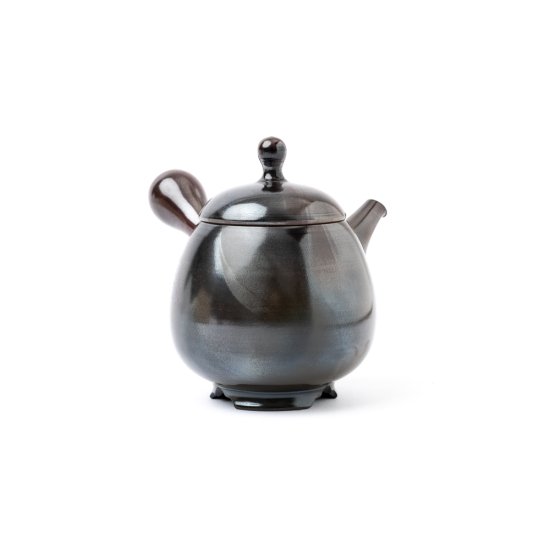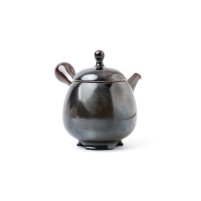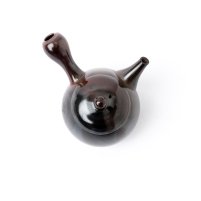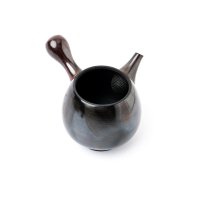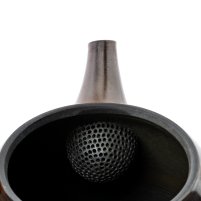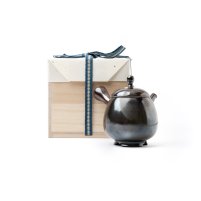As with all unglazed ceramics, wash with warm water and a soft cloth only. Do not use washing-up liquid or put in the dishwasher. Pat the outside dry with a towel to prevent water stains and leave the teapot to air dry naturally with the lid off. If tea leaves get trapped in the strainer, brush away with a soft brush. Hard water may cause limescale deposits to develop, in which case rinse with soft bottled water, then wipe with a soft cloth.
Kyusu Tokoname
Yohen Kodai VI
Setsudo
SKU
7716
Yoshi En has recently grown out of Sunday Natural to become an independent premium tea store. As part of this transition, some products may still be shipped in Sunday Natural packaging.
A magnificent Tokoname Kyusu masterpiece by the eminent Japanese potter, Setsudo, with red-brown Yōhen ombré and a carved Kōdai foot. The meticulously polished surface – so shiny that is looks varnished – highlights the exquisite crafstmanship in the perfectly smooth curves. Guaranteed to be a crowning glory in any Kyusu collection.
| Product | Side handle teapot, red and brown |
| Origin | Tokoname, Aichi, Japan |
| Maker | Yoshikawa Setsudo 吉川雪堂 |
| Volume | 250ml |
| Dimensions | Ø8.5cm x H9.5cm, handle 5cm, foot Ø5cm |
| Weight | 210g |
| Material | Red clay (Shudei 朱泥) |
| Production | Potter's wheel (Rokuro 轆轤) |
| Finish | Unglazed (Yakishime 焼き締め) |
| Strainer | Ceramic (Debeso) |
| Artist mark | Seal beneath handle |
| Packaging | Wooden box (Kiribako) |
In stock



